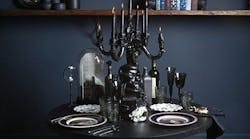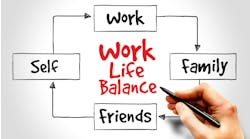At the turn of the 20th century, the Industrial Revolution was in full swing. The general idea that resource production was done in the home had shifted with both ideas and labor having moved to off-site manufacturing facilities. Machination revved up. Efficiency (of certain things) grew, skillsets transformed away from analog know-how, and standards of making evolved, inevitably entwined with their new modes of production.
The turn of the 20th century also bore a counter-shift, one of renewed interest in arts and the natural world: Central Park as we know it opened to the public in 1858; The American Museum of Natural History opened in 1869, with London’s following suit in 1881; in 1906 the Bloomsbury Group formed, united in their philosophical loyalty to and enjoyment of the aesthetic experience. With kinship to that philosophy, the Arts and Crafts Movement progressed in direct contemporaneity with the Industrial Revolution; Charlie Chaplin’s “Modern Times,” a concerned satire on the encroachment of industry on daily life, was released in 1936; in the mid-20th century, the American Craft Council, Folly Cove Designers, and other American crafts-focused collectives began forming all across the U.S.
It was a fruitful period of recalibration with the analog, the natural world, and art in a new day and age in which those worlds seemed (and maybe were) under threat.
And so the cycle continues. Now is a new day and age, and it’s no secret or understatement that the Digital Revolution is in full, powerful swing. In all of its ability to diversify and connect disparate communities and ideas, there’s a technological sleight of hand clandestinely curating our lives. Hopes for net neutrality are now wistful, naïve remnants of the internet’s halcyon days. It is an era of ever-increasing homogeneity.
True to the cyclical ways of industry, people are feistily kicking back against this digitalization. We’re seeing a restored appreciation for the handmade and for the tactile experience of creating.
This is the ethos of the maker movement.
The maker movement is a wide-sweeping cultural shift in the ways we produce and it’s ultimately counterintuitive to digitization. It’s a revitalization of the notion of micro-manufacturing or highly skilled manufacturing with smaller production ecosystems. To be clear, the maker movement is not a technologically averse phenomenon. Rather, it values the handcrafted over the purely digital and intuits the ways tech can be used to the advantage of the maker (think: 3D printing and laser cutting).
Institutions are now offering spaces specifically for this sort of production, such as Brooklyn’s Industry City, which skews space toward creator tenants versus larger corporations, or BMW-backed design hub A/D/O, which offers shared studio space for small-scale designers.
Bigger brands are defiantly taking note. As AdWeek reported a couple years back, brands like Levi’s and Home Depot are “courting” micro-manufacturers to bring fresh credence to their macro-corporate brands. We’re also witnessing this affinity for the privately owned/artisanal in the formation of retail partnerships between old-school manufacturers like Minnesota’s Faribault Woolen Mill Co. and big-box brands like West Elm and Restoration Hardware.
The maker movement is all around us. It is a part of the shift toward re-humanization (versus automation), authenticity (versus the ethos of “mass market”), and the value of individuality (versus homogeneity). And we’re privileged to be a part of it.
▼▼▼ Keep scrolling for more ▼▼▼


